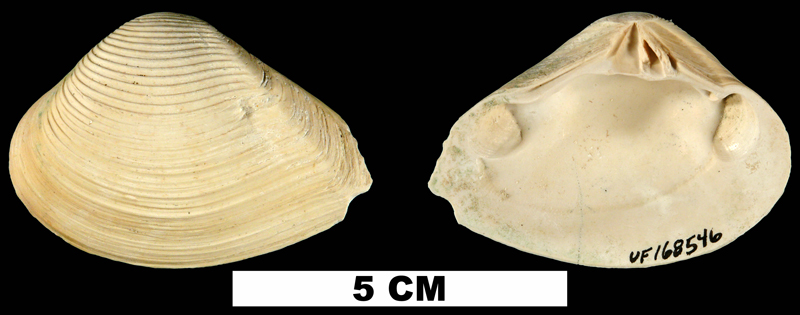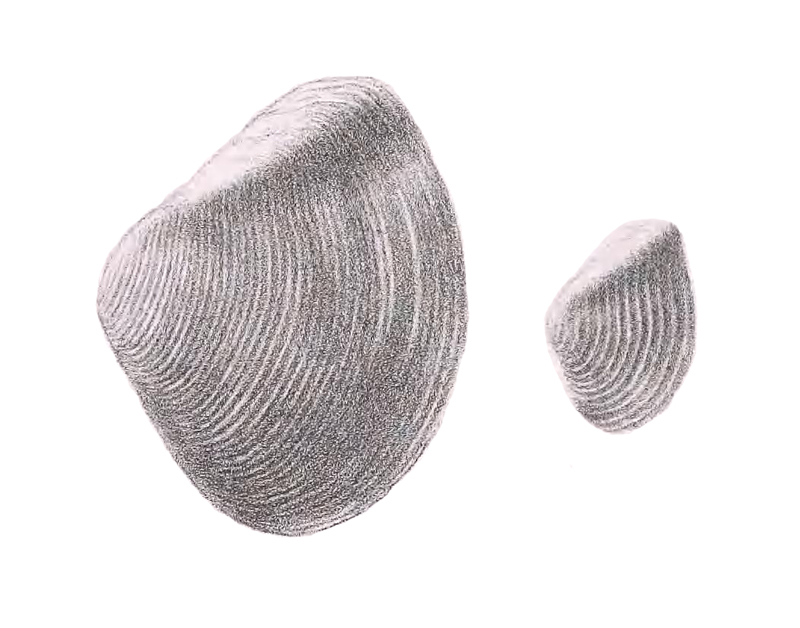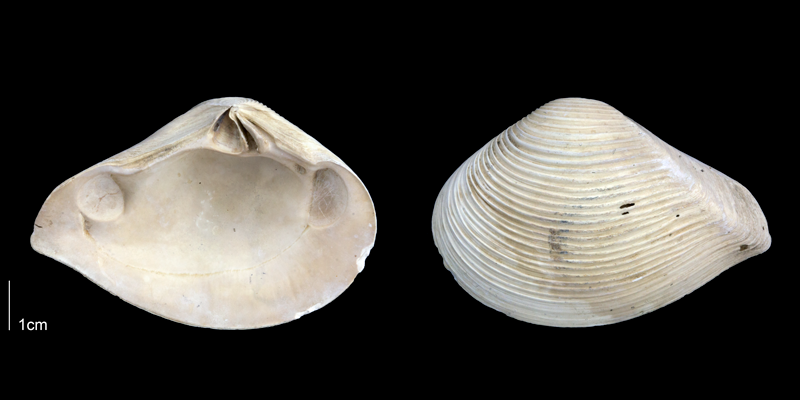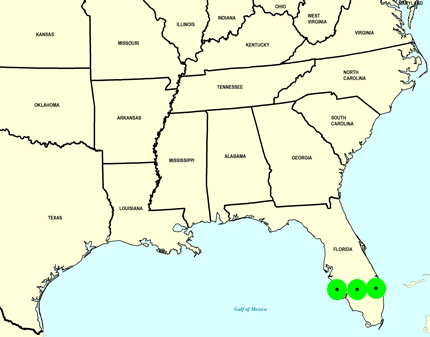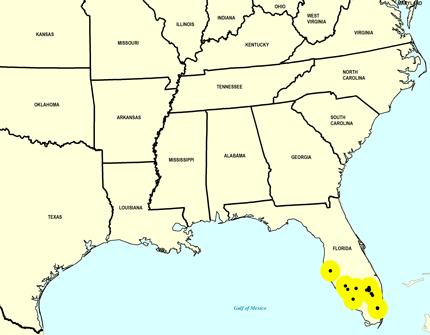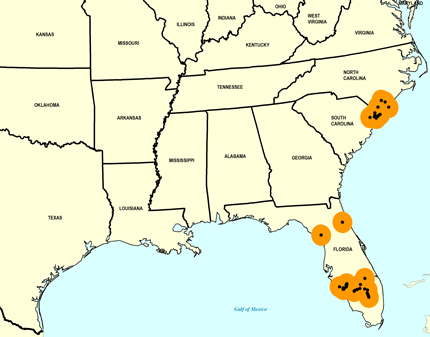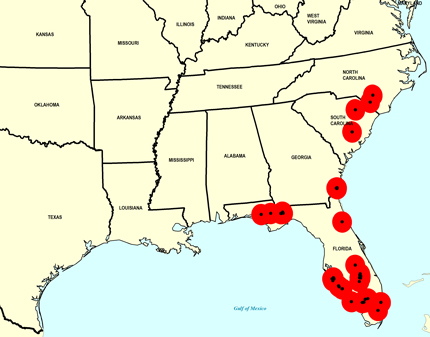
Eucrassatella speciosa
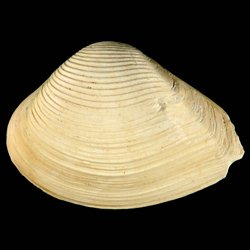
- Phylum: Mollusca
- Class: Bivalvia
- Order: Carditida
- Family: Crassatellidae
- Genus: Eucrassatella
- Species: Eucrassatella speciosa (Adams, 1852)
- Common Name: Gibbs' clam
Geological Range
Late Pliocene to Late Pleistocene; Recent.
Paleogeographic Distribution
Southern Florida to North Carolina.
Remarks
For information on the modern distribution of the species, see Malacolog and WoRMS.
First English Description (from Tuomey and Holmes, 1856, p. 74):
"Description. Shell somewhat triangular, thick, concentrically furrowed; buccal side rounded; anal side somewhat beaked, angular, with a longitudinal ridge; umbones incurved; lunule somewhat excavated. This well-defined species is easily distinguished from any of the varieties of the preceding species. The umbones are much incurved and more inflated than in any form of C. undulata. It differs from the Virginia and Maryland species in its more symetrical form and greater regularity of the sulci, which mark the entire surface of the shell. The ridge on the anal side is prominent, and produces an undulation which extends to the centre of the shell.
The species is very constant in its characters in every stage of growth. Fig. 10 represents a young shell.
We have great pleasure in inscribing this species to our friend and co-laborer, Professor L. R. Gibbes, of the College of Charleston.
Plate XX. Fig. 9, Exterior of left valve.
" 10, Young shell.
Locality. Waccamaw.
Museum, College of Charleston.
The living species of Crassatella are inhabitants of warm climates. The genus is first found in the Cretaceous system, and has its greatest development in the Tertiary."
To access this description in its original formatting through the Biodiversity Heritage Library, click here.
Stratigraphic Occurrences
- Late Pleistocene
- Coffee Mill Hammock Formation (S. FL)
- Fort Thompson Formation (S. FL)
- Middle Pleistocene
- Bermont Formation (S. FL)
- Bermont Formation? (S. FL)
- Early Pleistocene
- Bear Bluff Formation (SC)
- Caloosahatchee Formation (S. FL)
- Nashua Formation (N. FL)
- Waccamaw Formation (SC, NC)
- Late Pliocene
- Duplin Formation (NC)
- Duplin / Raysor formations (GA)
- Jackson Bluff Formation (N. FL)
- Raysor Formation (GA, SC)
- Tamiami Formation (S. FL)
- Tamiami Formation (Murdock Station Member) (S. FL)
- Tamiami Formation (Lower) (S. FL)
- Tamiami Formation (Pinecrest Beds) (S. FL)
